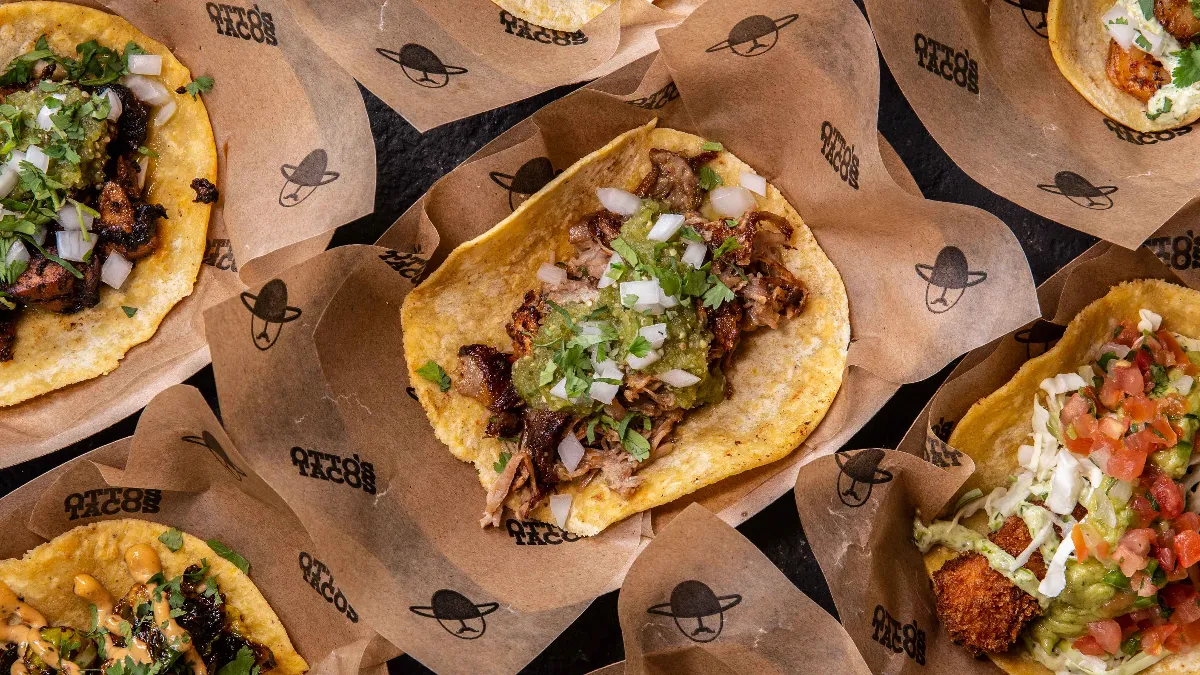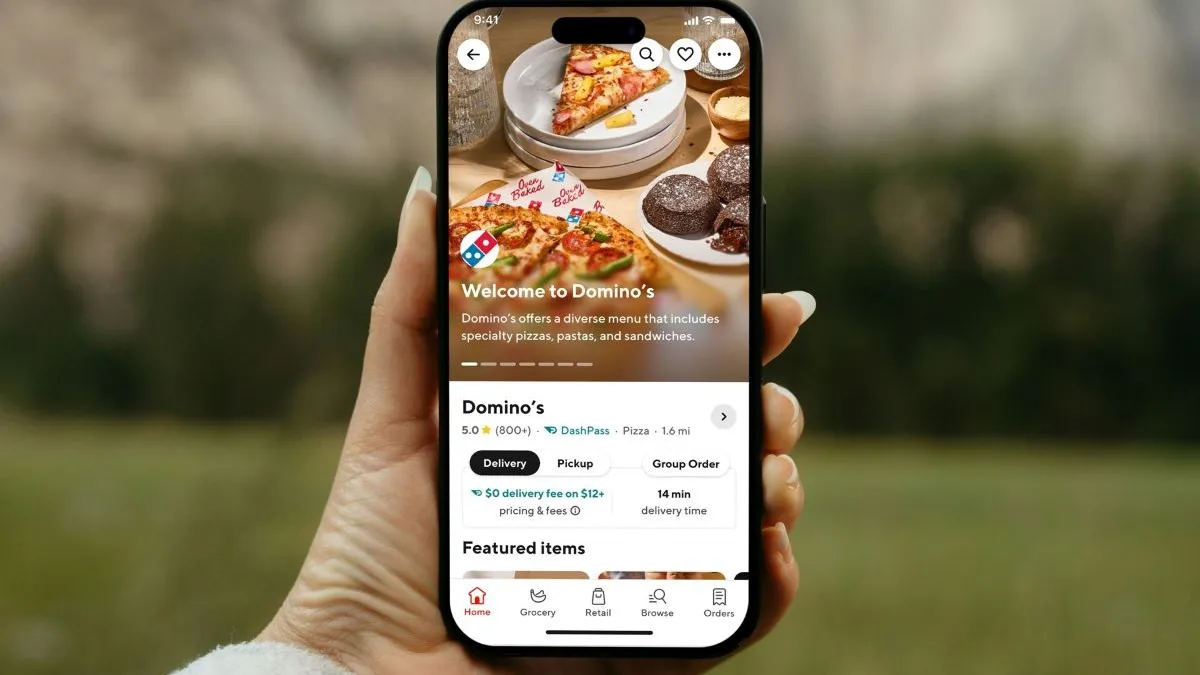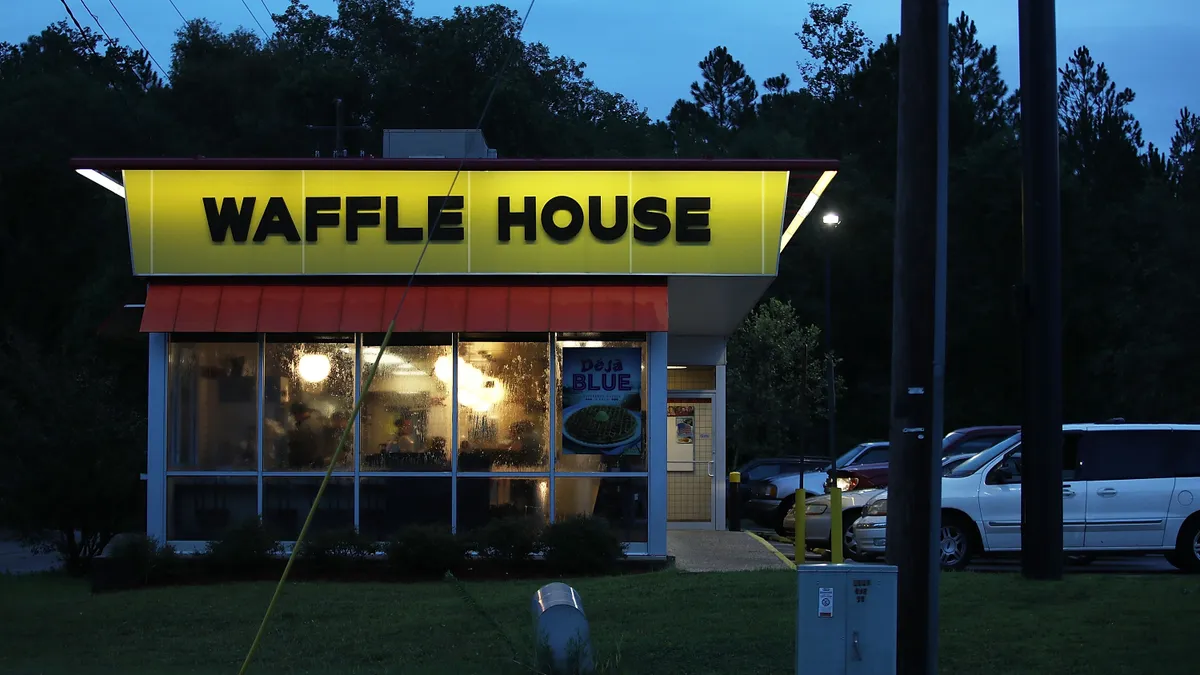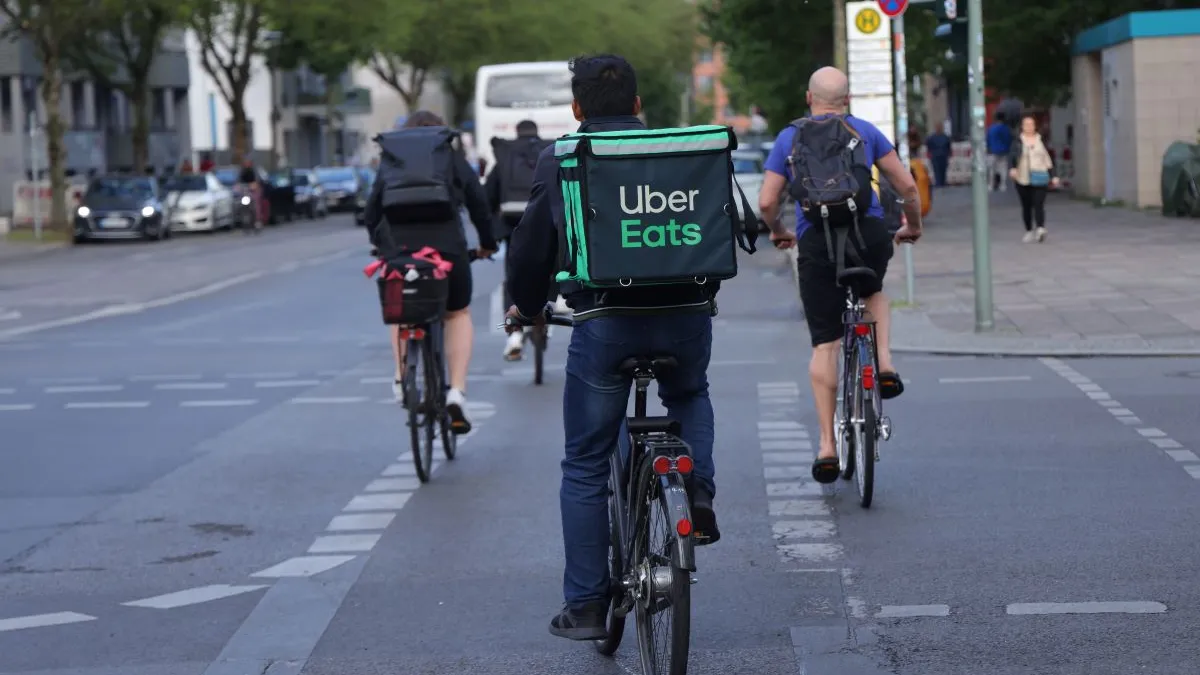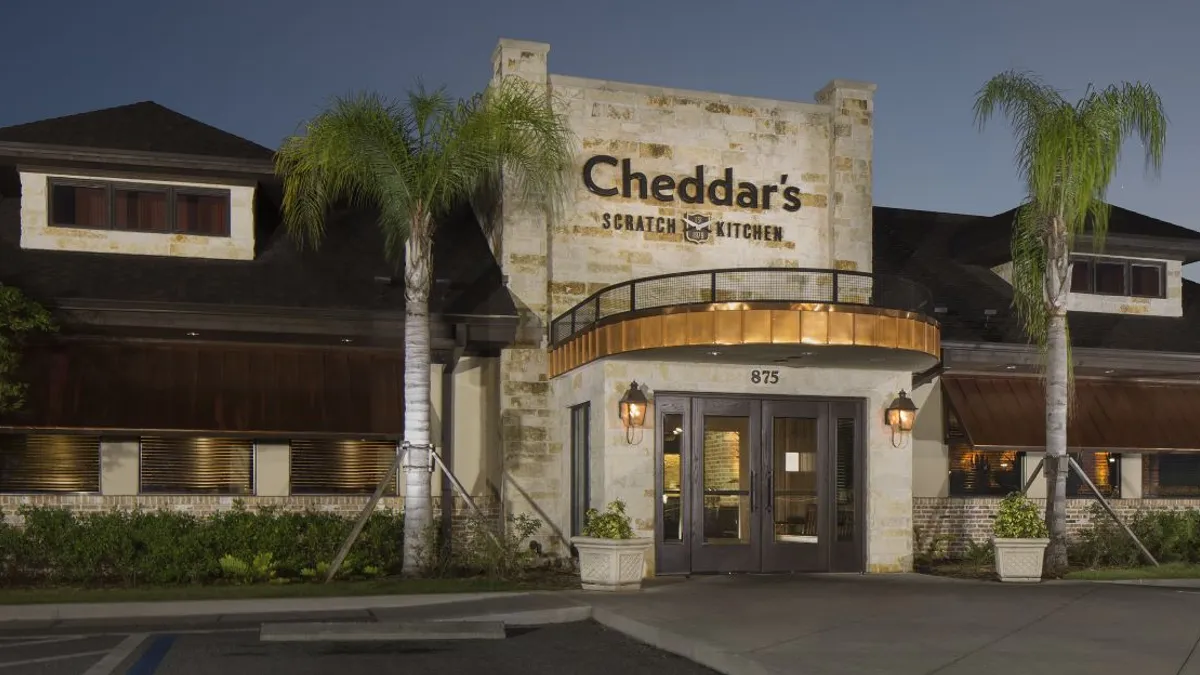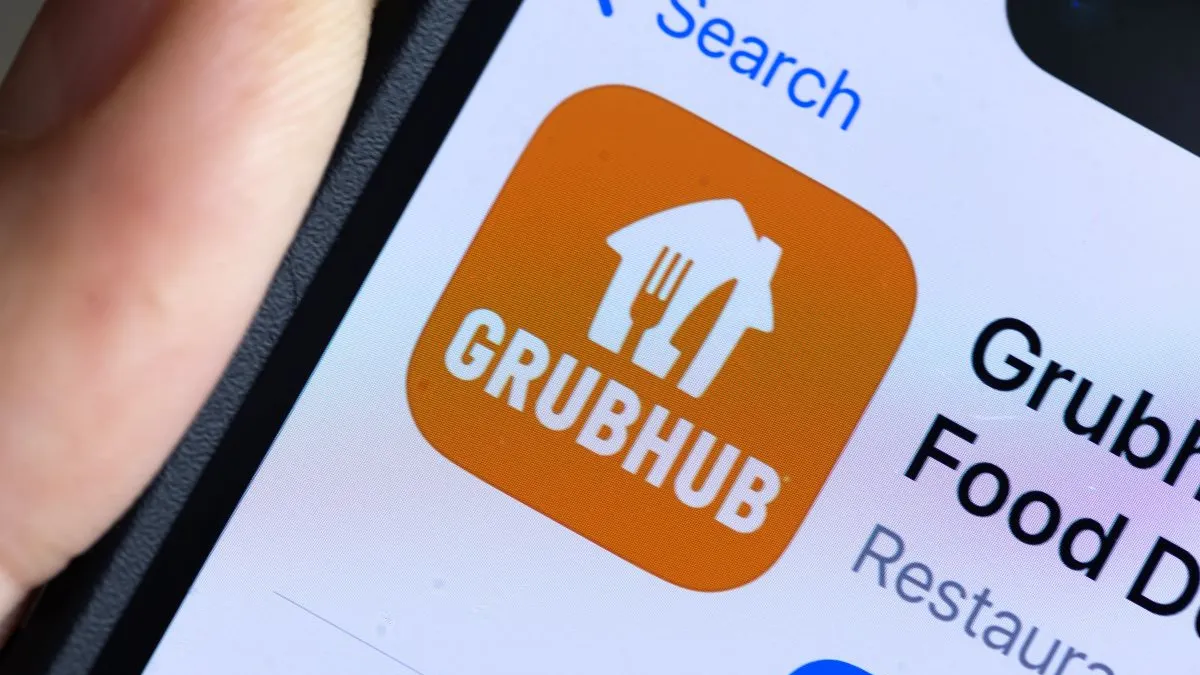This is the first in a three-part series highlighting host kitchen partnerships and virtual brands.
When Manhattan-based Otto's Tacos had to permanently close its four units due to the pandemic, Micha Magid, co-CEO of neighboring restaurant Mighty Quinn's, came up with a solution to keep it alive. The barbecue chain brought the taco brand, which has built a strong customer following over the last nine years, into its back of house and turned it into a delivery-only brand in December 2020.
Magid, who had befriended Otto's Tacos owner Otto Cedeno over the years — their respective restaurants were only two blocks away from each other — said the partnership is mutually beneficial.
Mighty Quinn's was able to add a new business with very little capital investment — it only had to install a flat top grill to accommodate Otto's Tacos — and began generating revenue from the concept on day one, Magid said. Cedeno and his culinary team trained the Mighty Quinn's staff to make sure the menu of tacos, bowls and salads matched what customers expected. And Otto's Tacos is generating licensing fees, Magid said.
Mighty Quinn's didn't need to spend a lot on marketing to spotlight Otto's Tacos because the restaurant had previously served thousands of people a week across its locations and had a well-established social media presence, Magid said.
"[Otto's Tacos] didn't just exist in the ether. It was something that people experienced physically throughout the city," Magid said. "I think that's why we're seeing monthly sales in excess of your average kind of digital ghost brand sales because they had such an entrenched fan base."
Mighty Quinn's has operated Otto's Tacos out of one location since fall 2020, and Magid said the company plans to roll out Otto's to other Mighty Quinn's locations in the future.
Mighty Quinn's is tapping into a growing phenomenon within the restaurant industry: restaurants of all sizes are partnering with outside eateries and preparing the menus of these concepts for delivery using their existing kitchen space. Unlike ghost kitchen providers, which typically offer a shared kitchen space offsite with multiple operators and require rent, host kitchen arrangements tend to be a low capital investment, require little to no additional labor and do not require any additional rent, experts said.
"Every independent restaurant has found itself over the last 18 months with a lot of spare capacity," Michael Schaefer, global lead of food and beverage at Euromonitor International, said. "There was a lot of room to experiment with these kinds of approaches."
While Mighty Quinn's and Otto's Tacos developed their host kitchen arrangement on their own, other restaurants have turned to third-party companies — such as Franklin Junction, Nextbite, Epic Kitchens, Acelerate and C3 — to help them execute delivery of a second brand out of their back of house.
Restaurant operators can earn anywhere from $5,000 to $20,000 in extra revenue a month by partnering with host kitchen facilitators, Schaefer said.
"That's real money," Schaefer said. "It's not their whole business, but it's significant."
That opportunity will shape the future of restaurant operations, Franklin Junction CEO Rishi Nigam said.
"I would say by 2025 greater than 50% of restaurants in this country will be selling multiple brands. By the end of the decade it'll be 90%," Nigam said.
Hosting virtual brands can bring new revenue amid market uncertainty
The strategy behind host kitchens isn't new, Nigam said. Co-branded restaurants have existed for some time, but they often struggled because customers would get confused by storefronts that marketed two different restaurants. The evolution of products and technologies, such as integrated online ordering platforms, development of delivery marketplaces and consumer adoption of delivery have helped prime the market for host kitchens, Nigam said.
"All of these things had to come together and create the opportunity where a particular kitchen could serve as multiple brands online, but not affect the in-store experience," Nigam said.
Franklin Junction, which was formed in 2019, owns the trademark to the term host kitchen and connects restaurants with independent operators or chains that have the space to prepare outside brands' menus and coordinate orders for delivery.
"In this country, between restaurants, hotels, convenience stores and stuff, we have over a million kitchens," Nigam said. "It's the second highest [number of restaurants] per capita [of] any country, except Japan, so we really don't need more restaurants. What we need is a way to make these kitchens more profitable."
While profit margins in the restaurant industry are typically 3% to 5%, adding a Franklin Junction platform can create a blended profit margin of over 10% for a host kitchen, Nigam said.
"We really don't need more restaurants. What we need is a way to make these kitchens more profitable."

Rishi Nigam
Franklin Junction CEO
Darrin White, COO at Frisch's Restaurants — which owns and operates nearly 100 Big Boy restaurants in Indiana, Kentucky and Ohio and franchises 25 units — has been a long-time proponent of host kitchen partnerships. The pandemic made Frisch's partnership with Franklin Junction, which began in 2019, even more valuable, White said.
"It's one thing to say, 'hey, we're going to focus on to-go orders and online orders and third-party delivery orders for our existing brand,'" White said. "But when you add incremental brands, and [you] see them start to take off and gain some traction, it really helped us continue to focus on being innovative and agile."
White aims at driving $3,000 per week per store at its Frisch's-owned stores with Franklin Junction's partnered brands. To hit this financial goal, some Frisch's units have to add more virtual brands to their kitchens, but this can bring complexities that are hard on restaurant staff, he said.
"To me, it's a very cost-effective revenue stream. It's little to [no] incremental labor. The food costs and royalties are really the expense," White said.
White hopes to ultimately have a portfolio of eight concepts that the company can plug and play across its restaurants with minimal complexity and easy marketing and training.
"You can find a blend. Every restaurant might have two or three concepts that they're executing out of their host kitchen, but those could be very different from a restaurant five miles [away]," White said. "Having that flexibility to [work with multiple concepts] is going to be ultra critical."
Labor pressure, facilitator fees, infrastructure can make hosting challenging
Host kitchens don't need to bring on additional labor, but operators need to ensure their staff is on board with the changes that come with adding a second restaurant concept to the kitchen, experts said. The additional revenue could actually help improve the employee experience, Nigam said.
"You are generating incremental revenue that … can go toward incentivizing employees, paying them better [and] keeping up with payroll," Nigam said. "I think we've actually enabled a lot of our host kitchen partners to better jump over the hurdle of the labor challenges that exist in the marketplace right now."
Restaurants also need to be wary of how much host kitchen facilitators take off the top of sales, Buck Sleeper, head of retail experience consulting at EPAM Continuum, said. Even though major platforms similar to Nextbite can offer convenience by managing employee training, menu development and marketing, they often charge commissions around 45%, he said. Nextbite, however, charges 15% comissision fees.
"It's not a cheap endeavor even though it would appear to have low startup costs," Sleeper said.
Still, some restaurants have been able to make good money by adding virtual brands across a fleet of stores, said Daniel Fleischmann, vice president of Kitchen Fund, a growth equity investor.
"When you can take [a virtual brand] to 50 units and multiply even a small base, there is a decent amount of cash flow that comes out [that] you can reinvest into your business," Fleischmann said.
Nextbite co-founder and CEO of Ordermark Alex Canter argues that virtual brands can create a more sustainable business model for restaurants. Nextbite has 15 virtual brands available across hundreds of locations and every major city in the U.S., and has partnered with restaurants ranging from QSRs to steakhouses.
To be successful, host restaurants need to make sure virtual brands work with existing infrastructure, Sleeper said. For example, it would be difficult for a donut shop to host a grilled cheese concept in its kitchen.
Some restaurants are hesitant about adding a virtual brand for fear of disrupting their existing business, so Nextbite is careful to develop virtual brands that feature simple menus that require few ingredients, Canter said. Its Fire Belly Wings brand, for example, only requires a host restaurant to cook wings and prepare a few sauces.
Nextbite uses an extensive pre-qualification checklist to evaluate the potential success of a restaurant partnership. This includes examining the restaurant's performance, online ratings, kitchen equipment, and kitchen capacity at certain times of day, as well as its geographic location.
Geography is particularly important, especially when selling brands to specific demographics. One Nextbite partner insisted on hosting Hotbox by Wiz Khalifa, which tends to appeal to younger demographics, but the host kitchen was located near a retirement community and didn't end up performing well due to the demographic mismatch.
Franklin Junction takes a more consultative, case-by-case approach when evaluating prospective host kitchen partners. Evaluating a hotel is different than evaluating a full-service restaurant, which is different than evaluating a QSR or convenience store, Nigam said.
Franklin Junction uses an algorithm to help with its matchmaking. Its algorithm is similar to what dating sites like eHarmony use and takes dozens of factors between two businesses into consideration to create a compatibility score, he said. During this process, Franklin Junction examines menus, ingredients, equipment, market conditions, target customer, pricing, demographics, labor and other factors, he said.
There's also human involvement in finding a qualitative fit, Nigam said. While Franklin Junction gives multiple brand recommendations to prospective host kitchens, it ultimately decides which host kitchens will pair with which restaurant brands.
Making a match will help ensure that host kitchens can reap incremental revenue, which Nigam said can be up to 30% margins.
"This is the norm," Nigam said. "This is the only way to make investing in a restaurant and building a brick and mortar make any sense."
The industry is only in the early stages of understanding the potential host partnerships can provide, Nigam said. In the meantime, host kitchens and virtual brands can use these partnerships to help weather the restaurant industry's ongoing economic uncertainty by ensuring they have enough revenue, Sleeper said. This way, these businesses can actually focus on growing their operations instead of constantly worrying about their bottom lines, Sleeper said.
"Everyone's really spooked that they are going to have to need multiple options to keep their doors open for whatever comes next," Sleeper said.
Correction: In a previous version of this article, EPAM Continuum was misidentified as EPAM Consortium.



